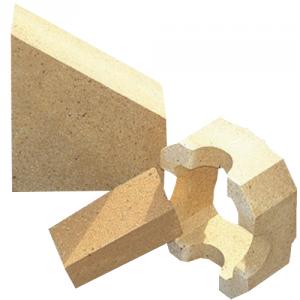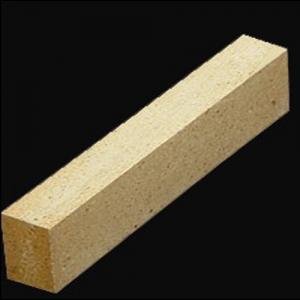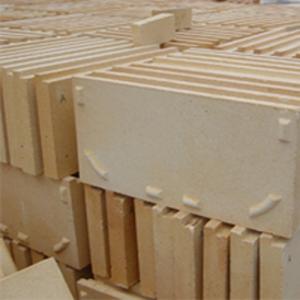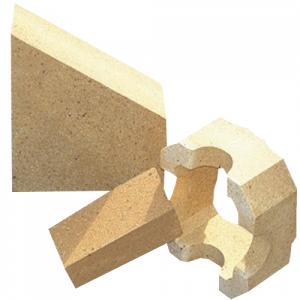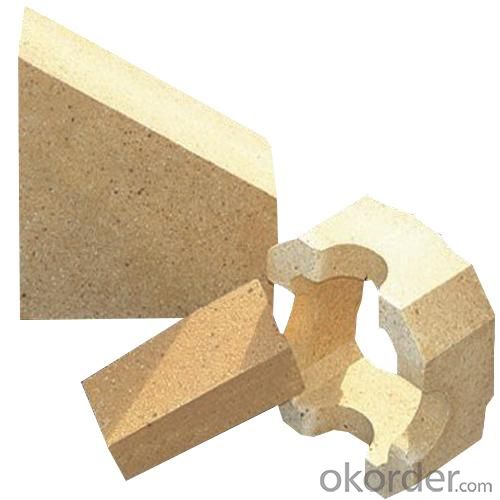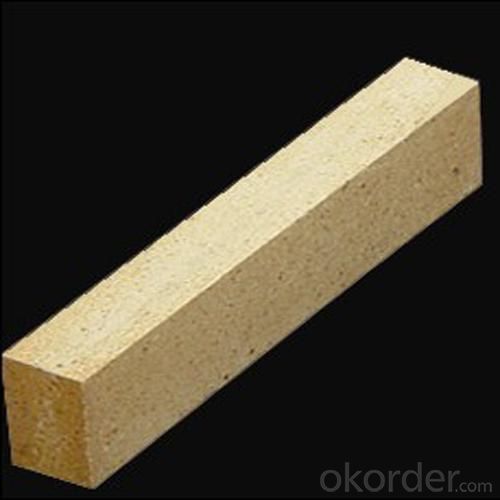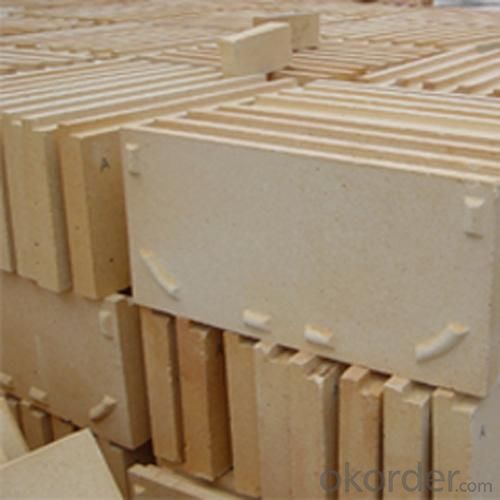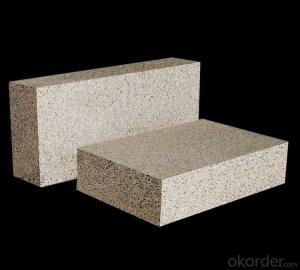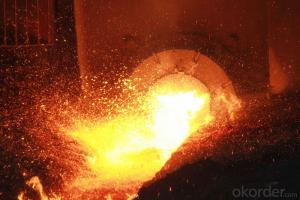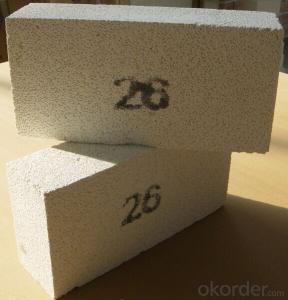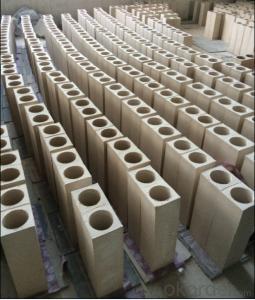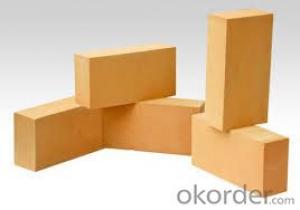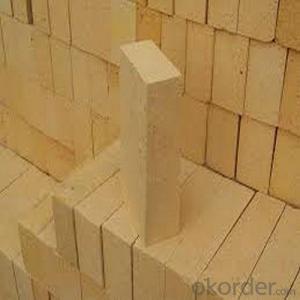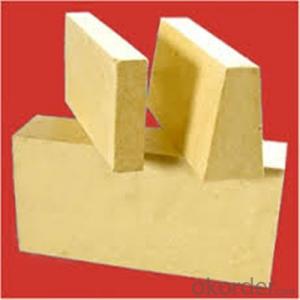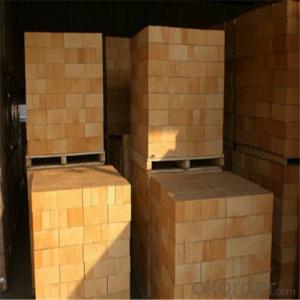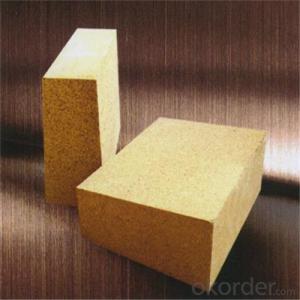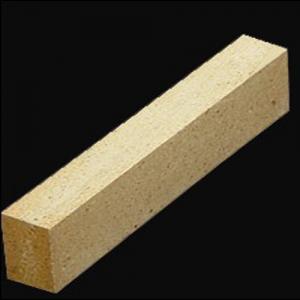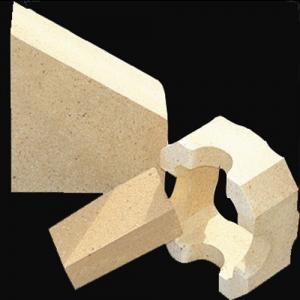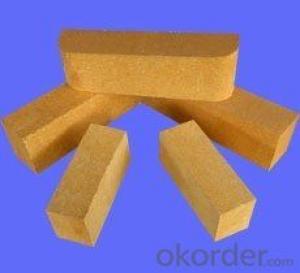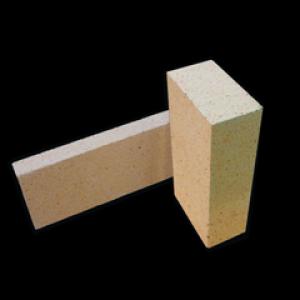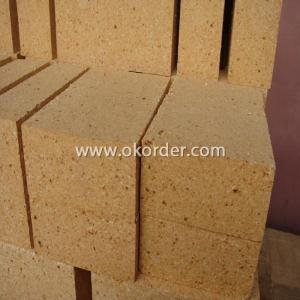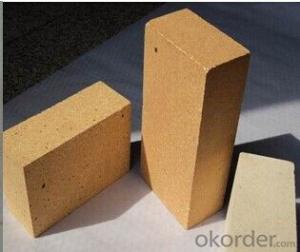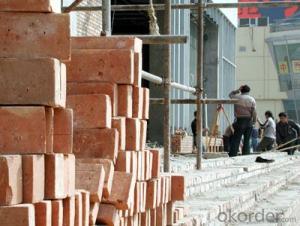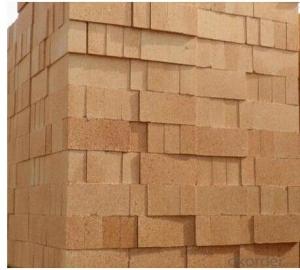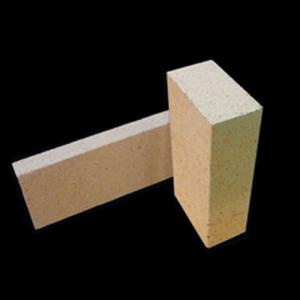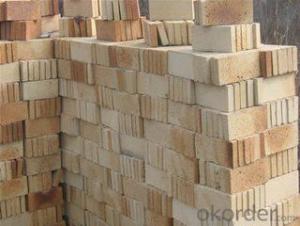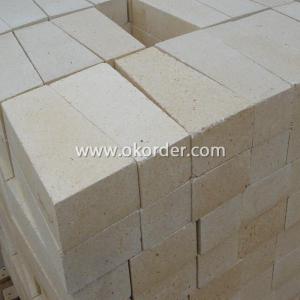Fireclay Brick DN12 Low Porosity
- Loading Port:
- China Main Port
- Payment Terms:
- TT or L/C
- Min Order Qty:
- 5 ton m.t
- Supply Capability:
- 1000 Tons Per Month m.t/month
OKorder Service Pledge
OKorder Financial Service
You Might Also Like
General Information of Low Porosity Fireclay Brick DN12
Our corporation produces a comprehensive range of Low Porosity Fireclay bricks, with 30% to 55% alumina content, all of these bricks exhibit excellent performance.
Our Low Porosity Fireclay bricks are the final result of blending excellent calcined flint clay and calcined bauxite, with cutting-edge technology, adding superfine powder, after mixing, drying, forming, in the high temperature shuttle kiln. We ensure you that the Fireclay Bricks made by us possess high quality standard and have gone through all the complicated quality control parameters. Their durability and strength adds life to the structure and they have the capacity of bearing high temperature.
Technical Data of Low Porosity Fireclay Brick DN12 | ||
Physical Properties: | ||
Refractoriness | ℃ | 1750 |
Permanent Linear Change(1450℃×2h)% | % | -0.1~0.05 |
Apparent Porosity, % | % | ≤12 |
Cold Crushing Strength | Mpa | ≥65 |
Refractoriness Under Load (T0.6) | ℃ | 1470 |
Thermal Expansion at 1000℃, | % | - |
Density | g/cm3 | ≥2.35 |
Chemical Analysis: |
|
|
Al2O3 | % | ≥45 |
Fe2O3 | % | ≤1.2 |
Note: | ||
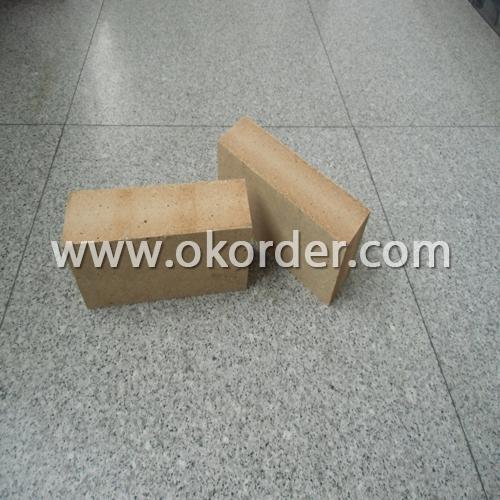
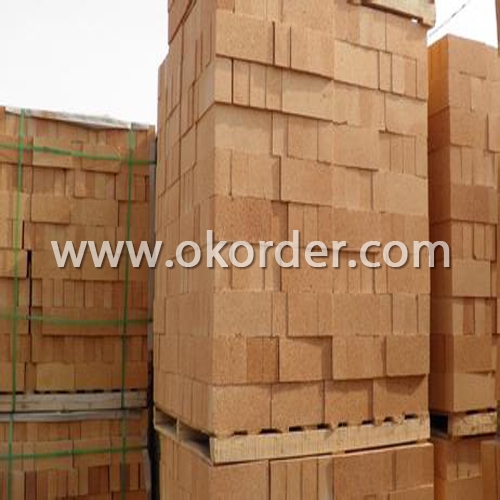
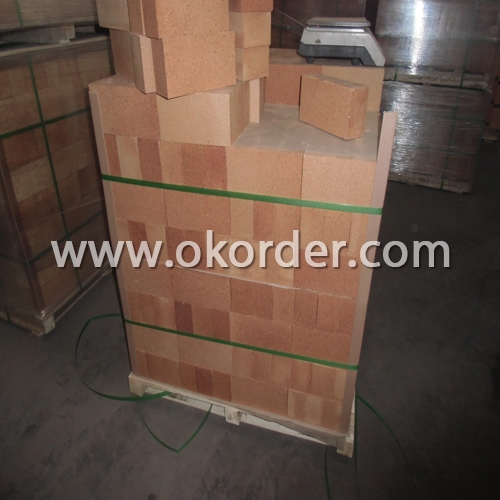
Feature of Low Porosity Fireclay Brick DN12
Resistant to thermal shock, abrasion, chemical attack
High ability for anti-abrasion during work
Low shrinkage degree under high temperature so as to maintaining integrity of the furnace lining
Low apparent porosity, and low Fe2O3 content to reduce the carbon deposit in the blowhole and avoid the bricks broken in case of expansion
Applications of Low Porosity Fireclay Brick DN12
Low Porosity Fireclay Brick DN12 is mainly used in glass furnace.
- Q: Whether the cement kiln refractory bricks belong to hazardous waste or not?
- Refractory brick produce dust hazards if it is broken, It is also should be paid attention to that if is refractory brick containing chromium, which will easily produce Cr VI when met with water, Cr^6+ material produced by magnesia chrome bricks is difficult to be damaged in the environment, which in many cases will exist in nature for a long time, continue to endanger human health. Chromite, as the raw materials to make magnesia-chrome brick, often exists in the form of trivalence (Cr203), is not toxic, nor carcinogenic, but in the cement rotary kiln high temperature oxidation atmosphere, it reacts with alkali metal oxide in cement materials, will produce chromic acid and alkali acid which is harmful to people's health. There are MgOIn contained in broken magnesia-chrome bricks, whose water solution is weakly alkalinity and generally will not easily produce K2cr207. K2Cr04 is a kind of weak oxidaiblity chemical compound, which has high chemical stability. It is very difficult to be reverted to non-toxic trivalent chromium when it blends into the environment. In many cases, these chemical compounds containing Cr VIcompounds will exist in nature stably, causing long-term pollution to the environment. This kind of harm is sustainable. The second reason that is very serious is that the high grade chrome ore is less and less in the world, forcing refractory manufacturers to find and develop
- Q: What kind of coal should be used to burn refractory brick? and how many calories smoke is suitable?
- Coal briquette's effect is also good
- Q: How to distinguish between sintered clay brick and sintered coal gangue brick
- Coal gangue is an industrial waste produced during coal mining. Using coal gangue as raw material for the production of new wall materials, both to protect the ecological environment, but also save the land, save energy, it meets the development policy of wall materials industry in China, is a new wall material attaches great importance to and vigorously support the development of the.
- Q: Why can't build refractory brick behind the skew block?
- refractory is heat expansion and cold contraction, it is also called refractory?brick, can resist high temperature up to 580-770 degrees. Mainly used for the smelting furnace. faint?yellow or brown, when it is high temperature, it will squeeze toward the center. Refractory material made of refractory clay or other refractory raw materials. the shortened form of fefractory brick is brick. vault will be extrusion deformation. Refractory material with a certain shape and size
- Q: What is the density of the high alumina refractory brick?
- According to the quality, the general level is two point four to two point seven or so
- Q: What is the advantage of the ceramic fiber material compared with the refractory brick?
- Ceramic fiber material is heavier than refractory bricks, property of machinery operation, low heat capacity, and has high anti-stretchability and good thermal shock resistance, low thermal conductivity make its thermal insulation effect is ten times than refractory brick, it won't has crack in sudden coolness and heat, and the construction is much easier than that of refractory brick, not delaying the production.
- Q: Why can't gravity retaining walls be made of clay bricks?
- The masonry of gravity retaining walls, of course, takes into account compression problems, and the use of clay bricks requires consideration of compression calculations and service life.
- Q: The harm of wet bricks used in refractory bricks
- Increase the natural protection time, increase the baking time, or water can not discharge, this will cause swelling deformation of furnace wall.
- Q: What are the advantages and disadvantages of clay bricks?
- Advantages of clay bricks1. clay brick materials, cheap, durable, and fire prevention, heat insulation, sound insulation, moisture absorption and other advantages, is widely used in civil engineering. Waste brick can also be used as aggregate of concrete.2. waste bricks can also be used as aggregate for concrete.3. fly ash brick is made of fly ash as main raw material and mixed with cement material such as coal gangue powder or clay. It is made up of batching, molding, drying and roasting. It can make full use of industrial waste residue and save fuel.
- Q: Where are clay bricks or cement bricks?
- Cement brick is the use of fly ash, cinder, coal gangue, slag, chemical residue or natural sand, sea mud etc. (more than one or several kinds of raw materials) as the main raw material, made of cement coagulant, a kind of new wall materials by high temperature calcination made called cement brick.
Send your message to us
Fireclay Brick DN12 Low Porosity
- Loading Port:
- China Main Port
- Payment Terms:
- TT or L/C
- Min Order Qty:
- 5 ton m.t
- Supply Capability:
- 1000 Tons Per Month m.t/month
OKorder Service Pledge
OKorder Financial Service
Similar products
Hot products
Hot Searches
Related keywords
